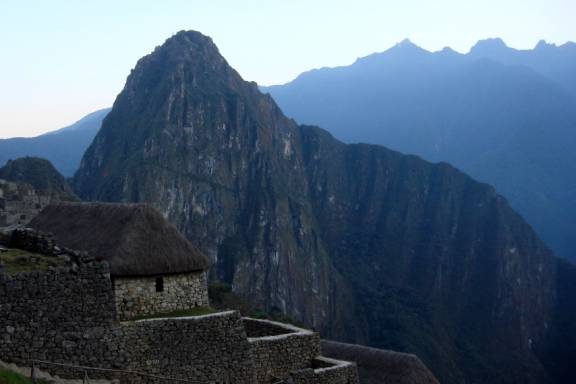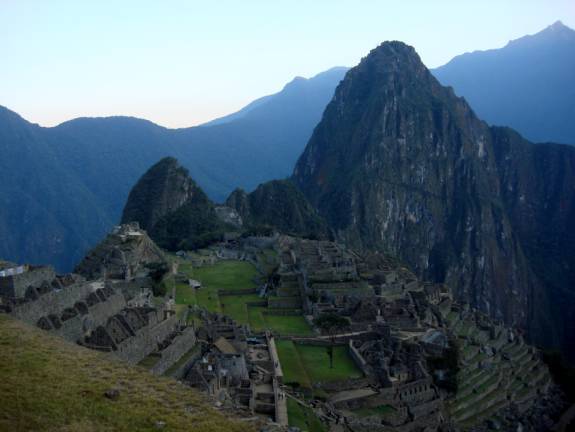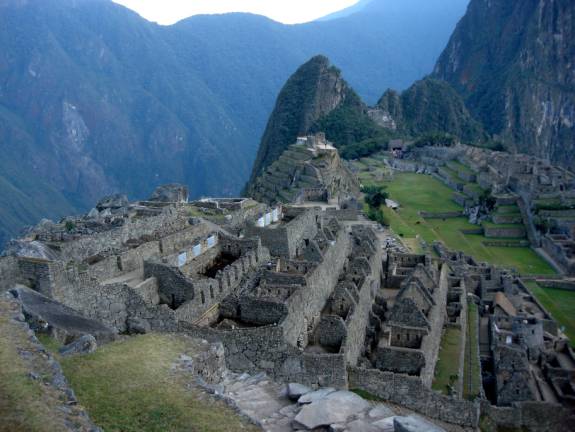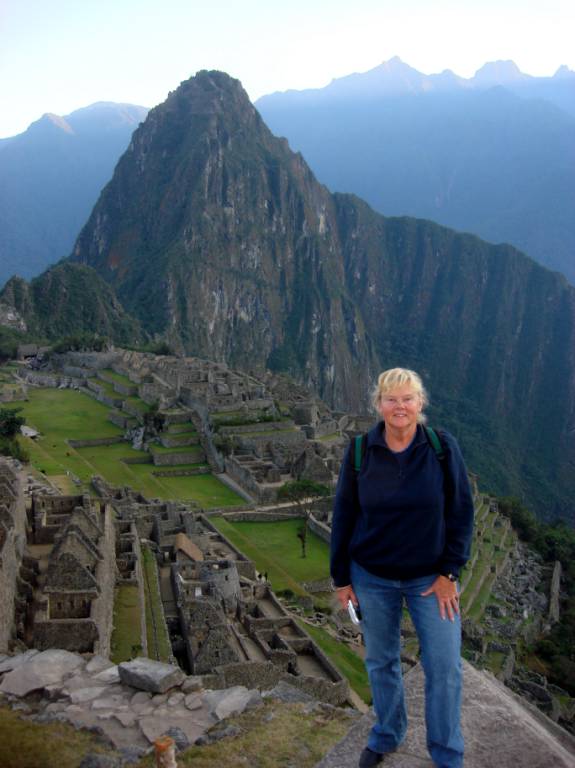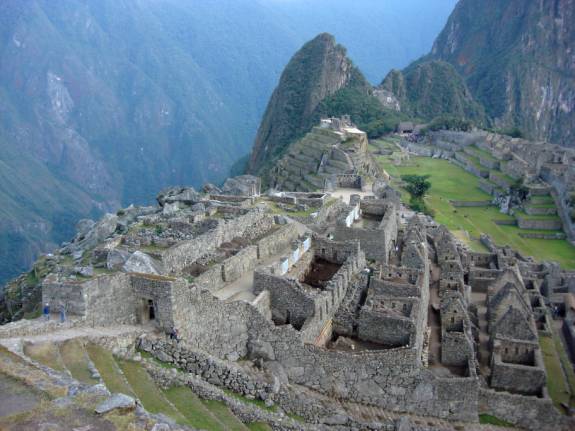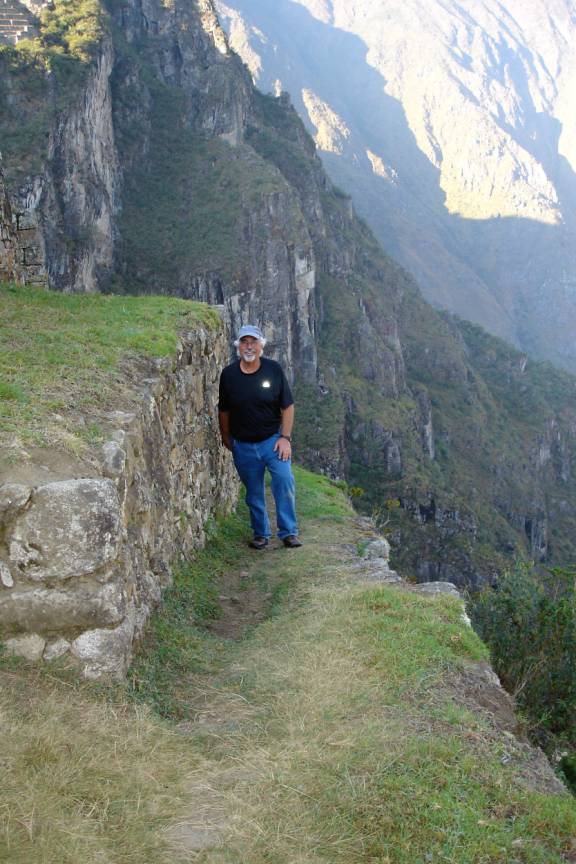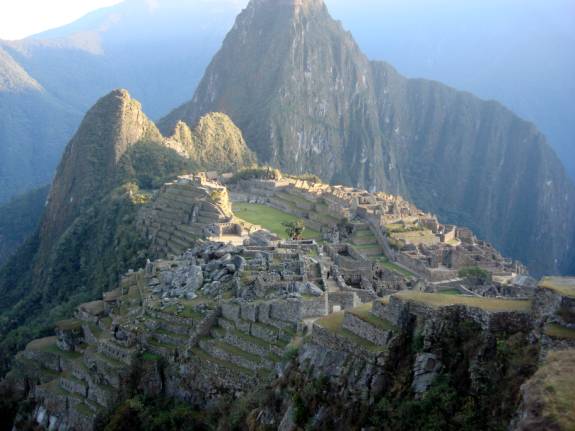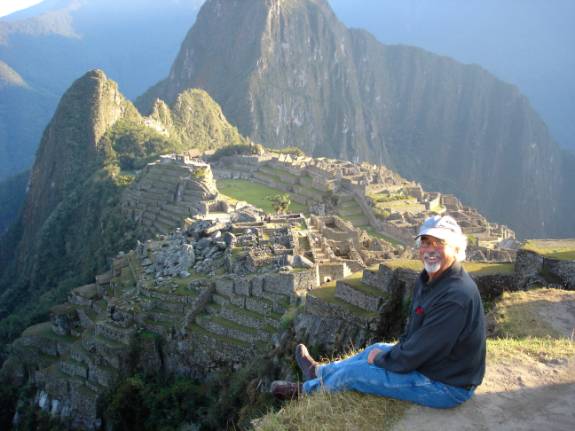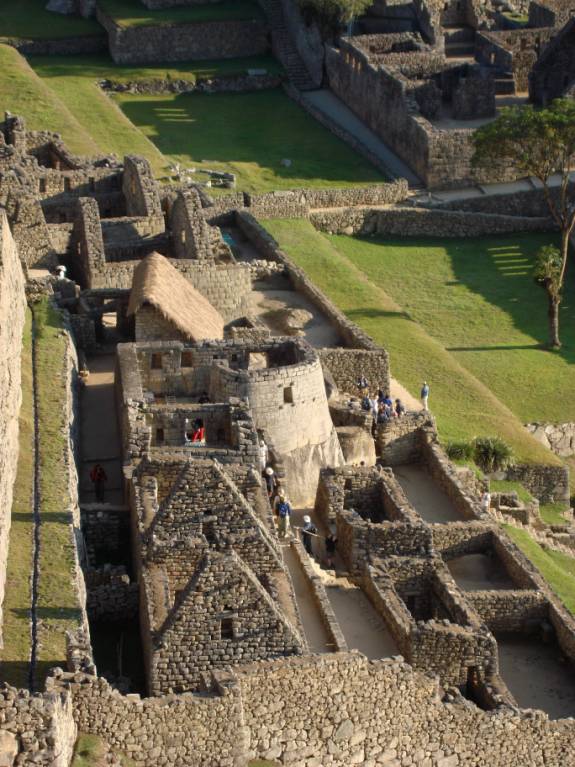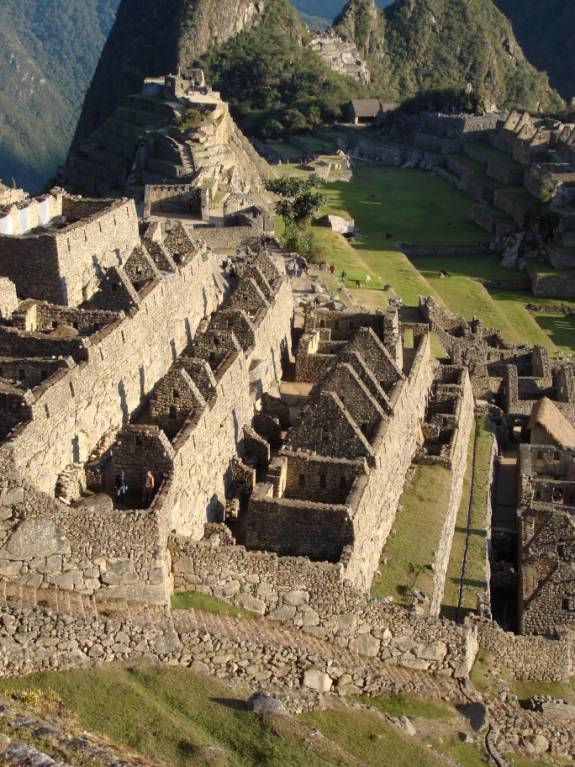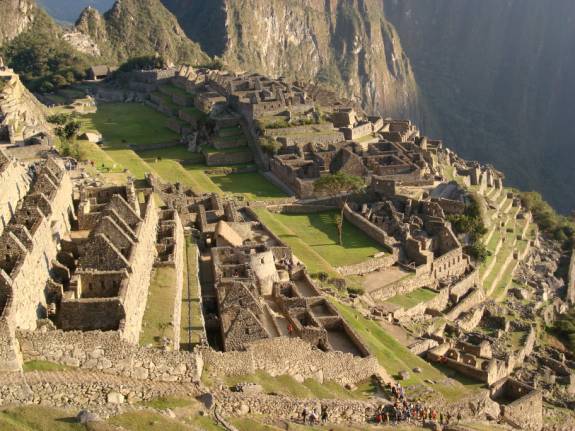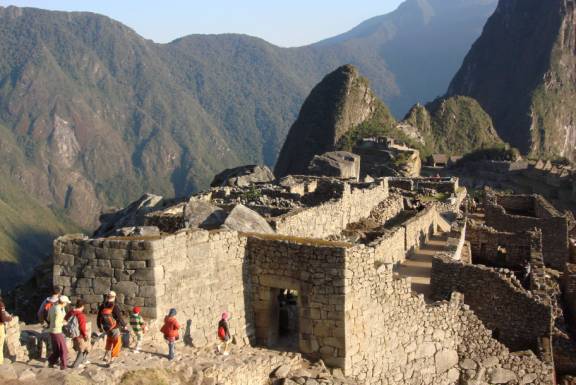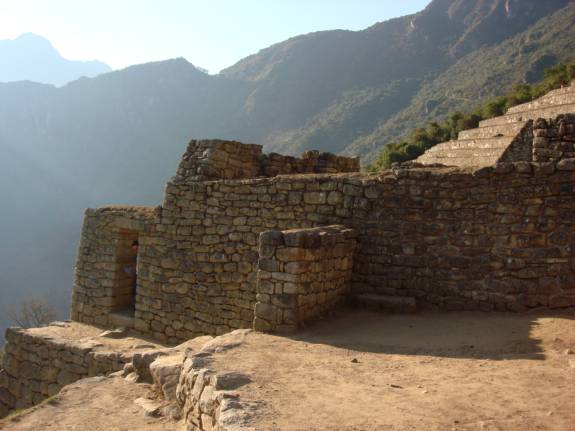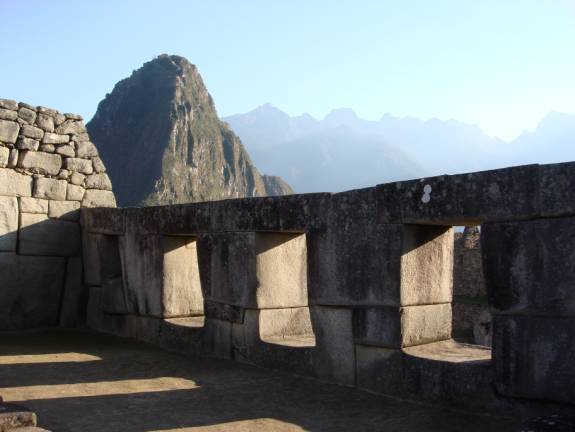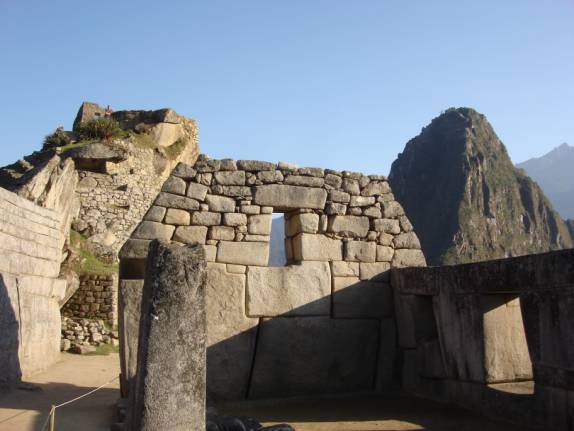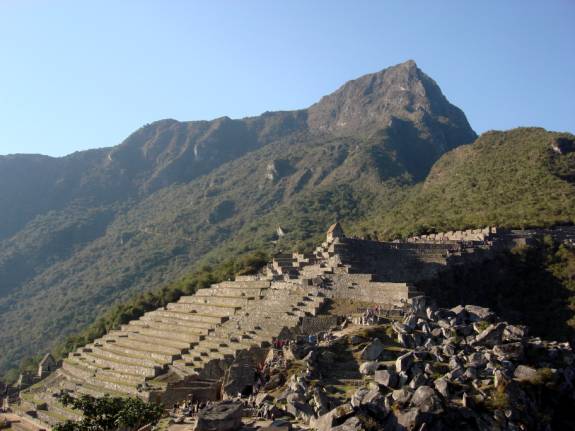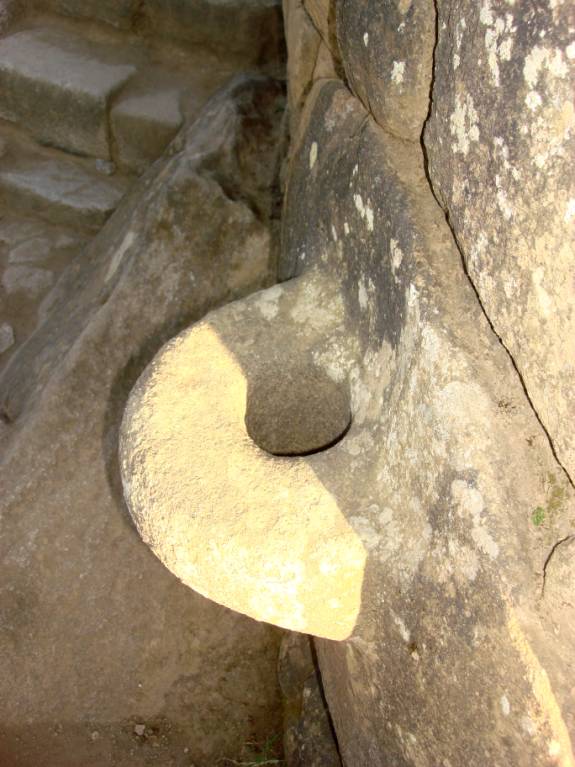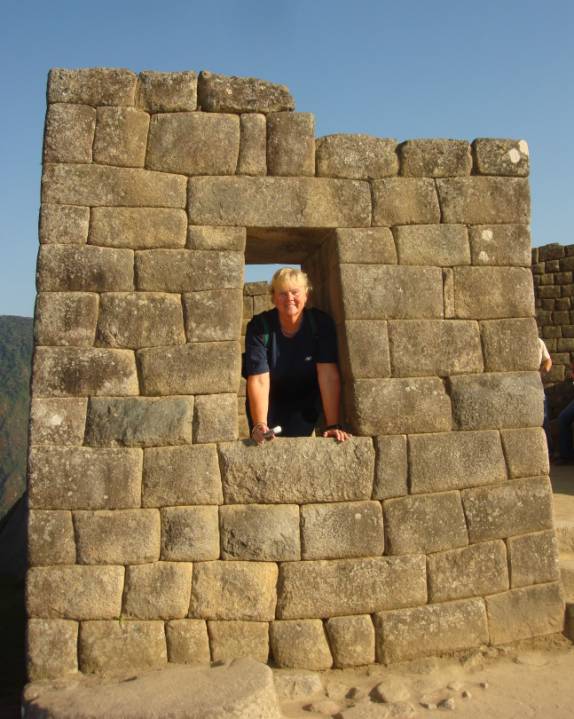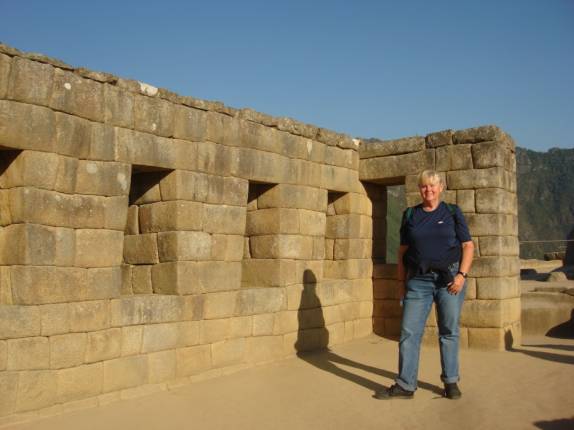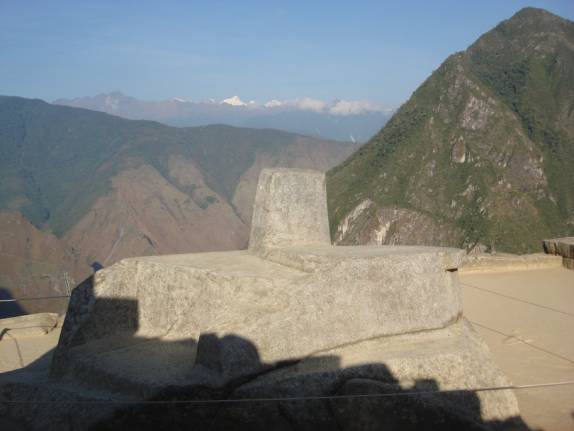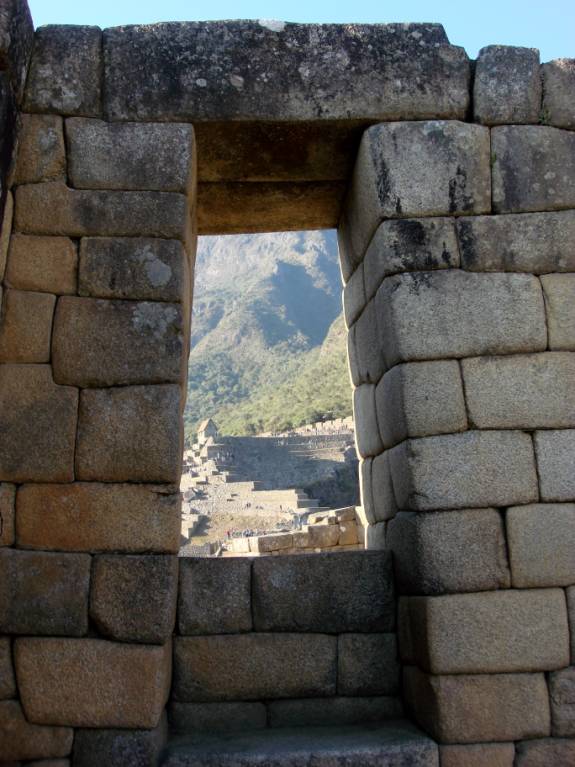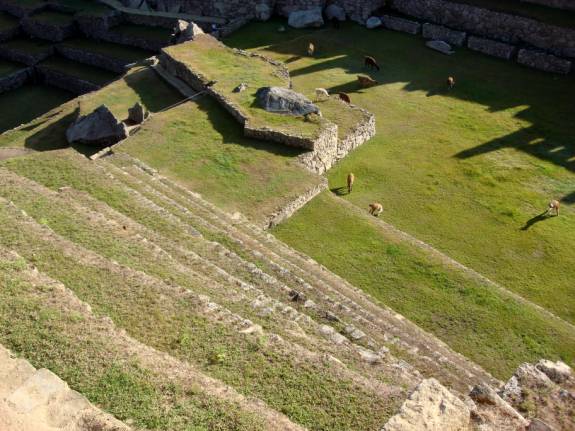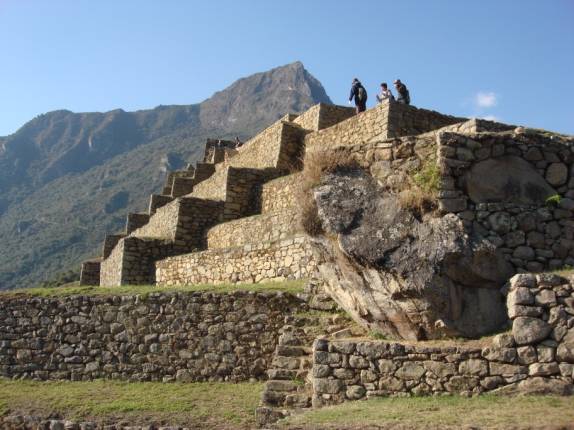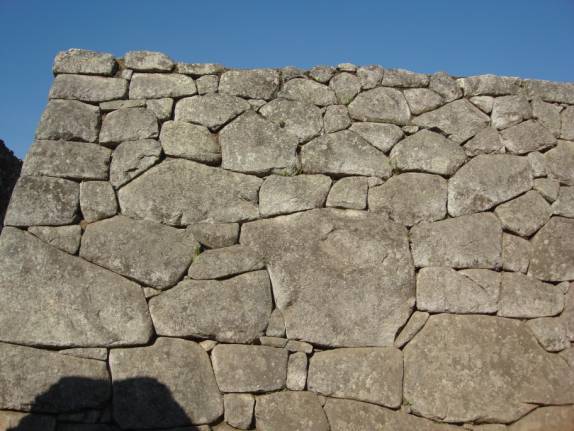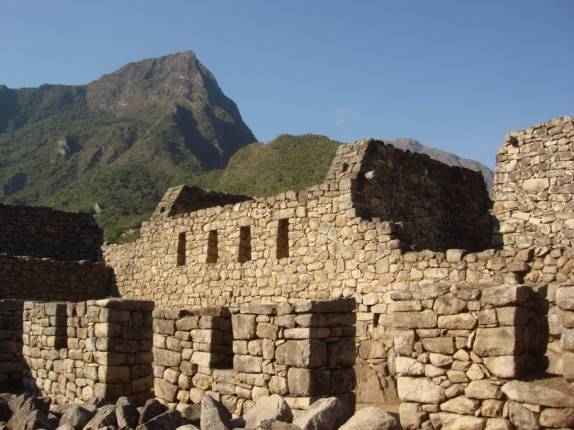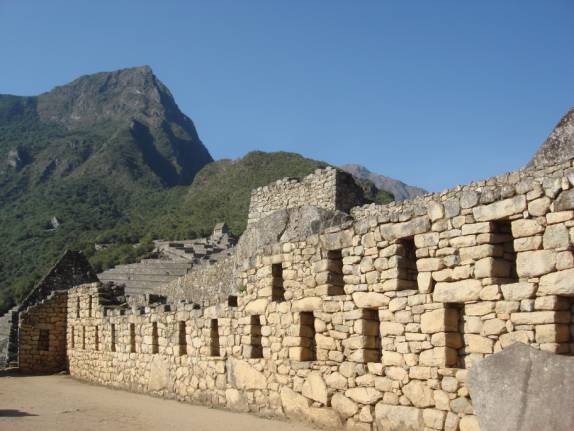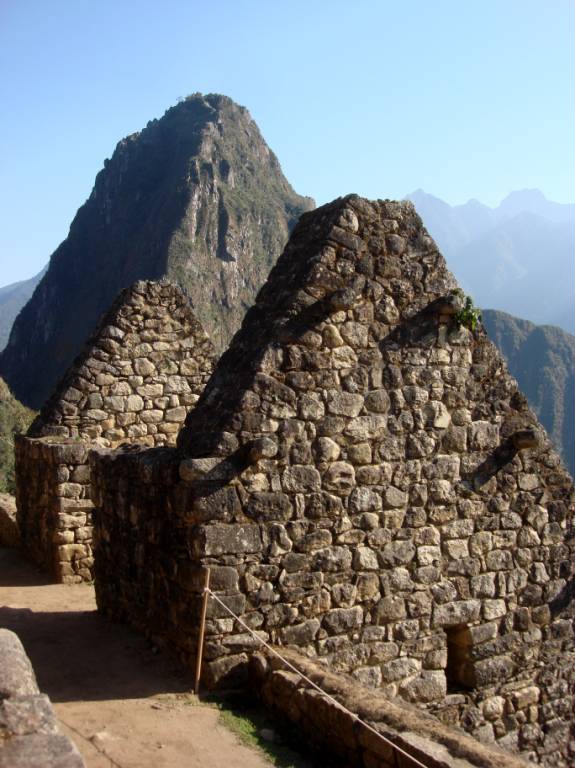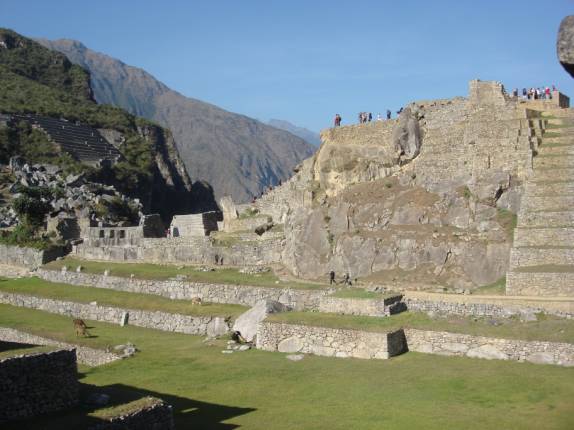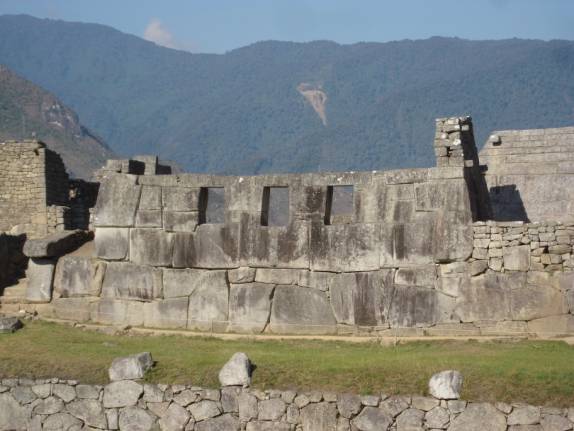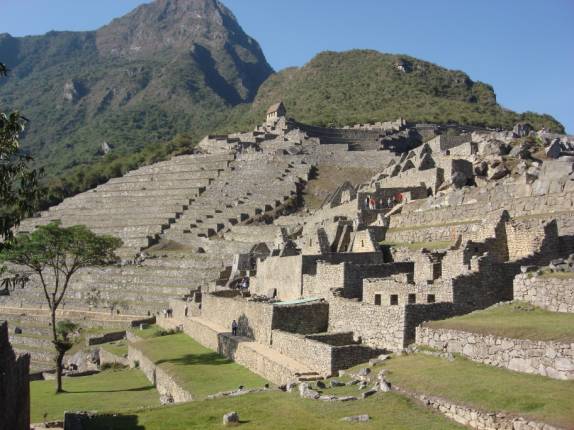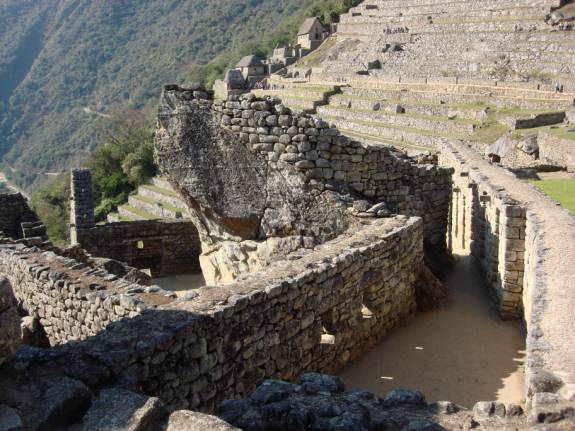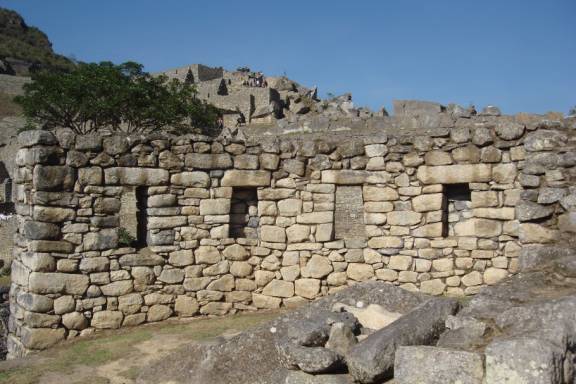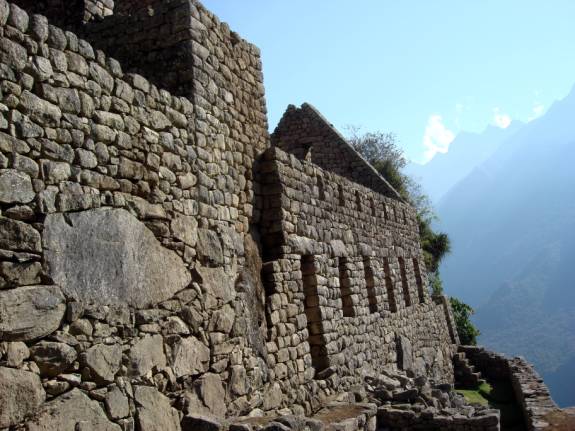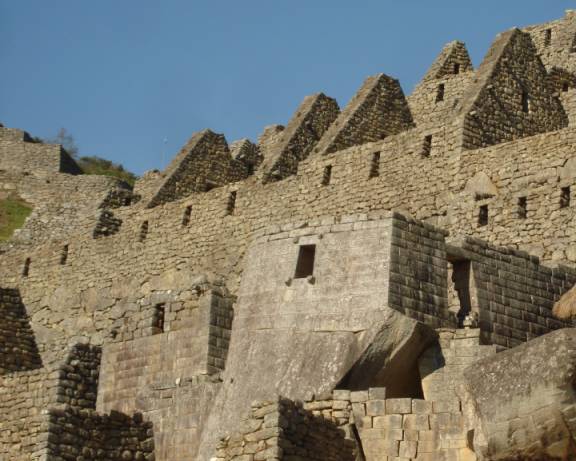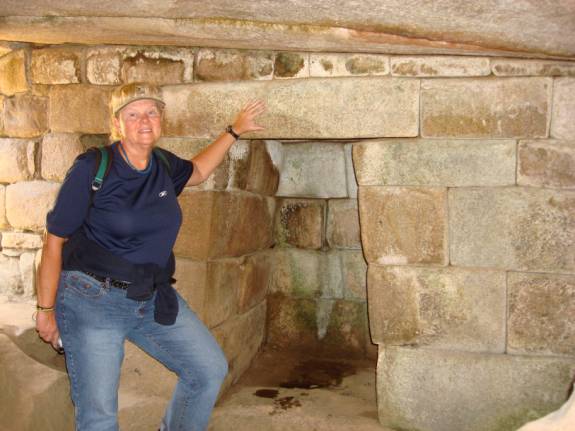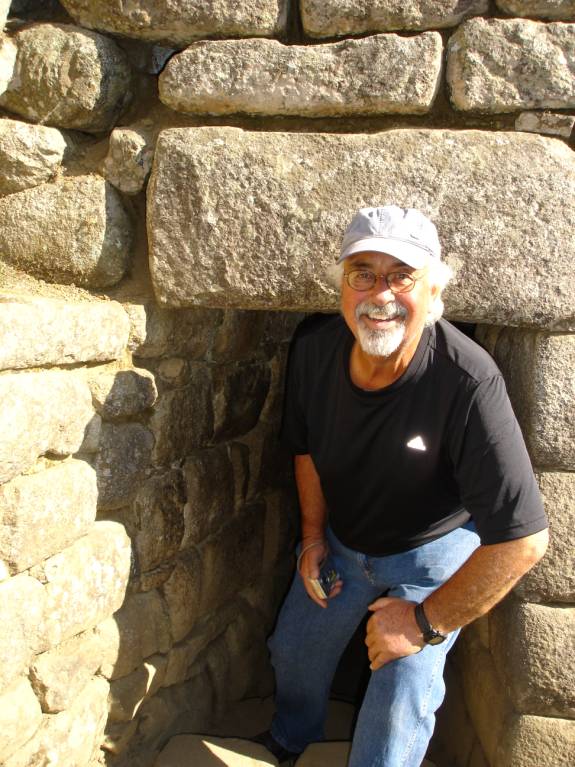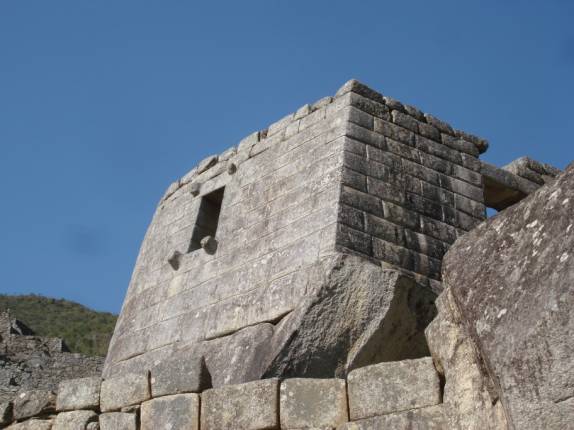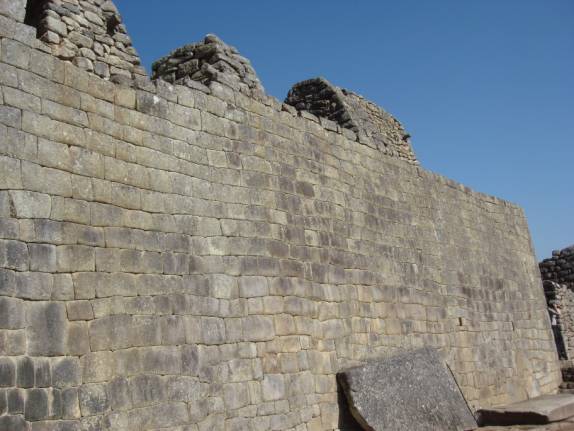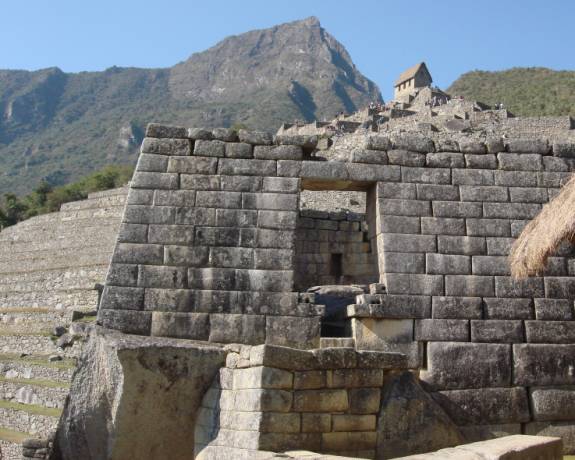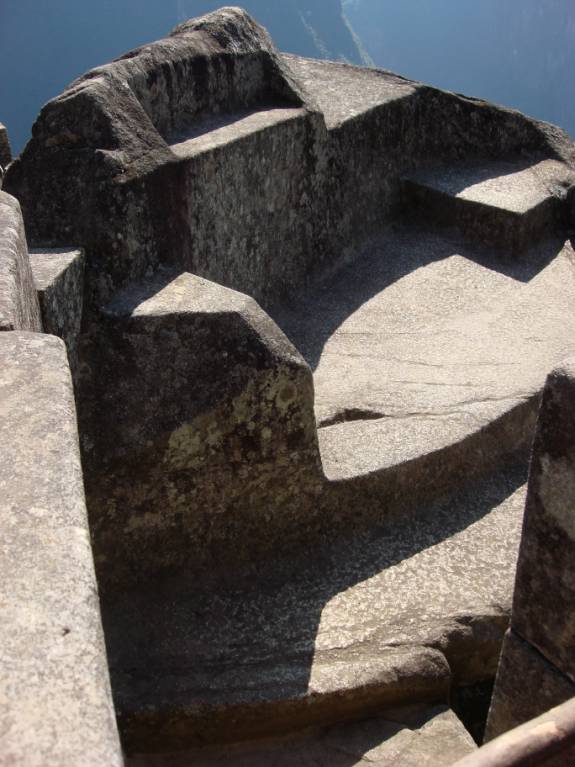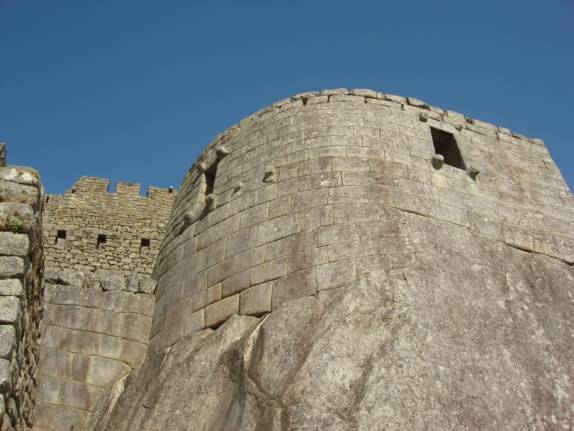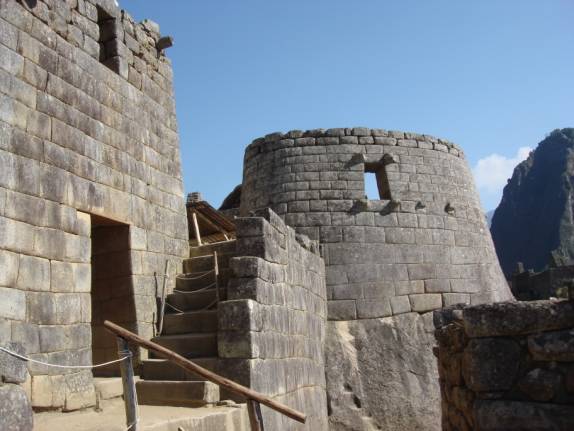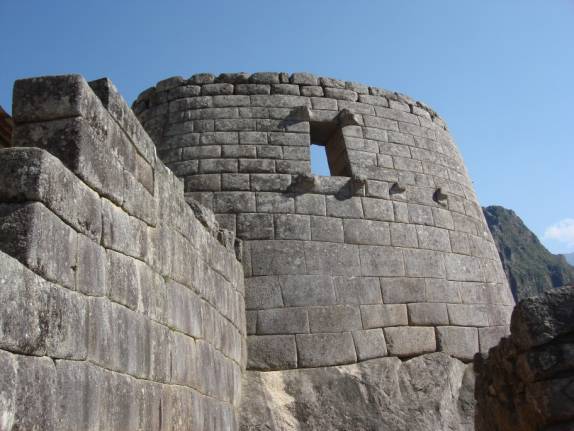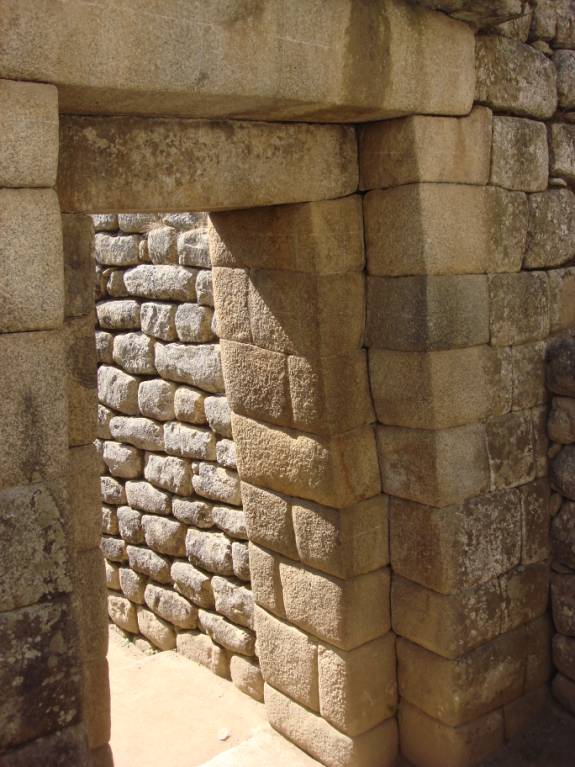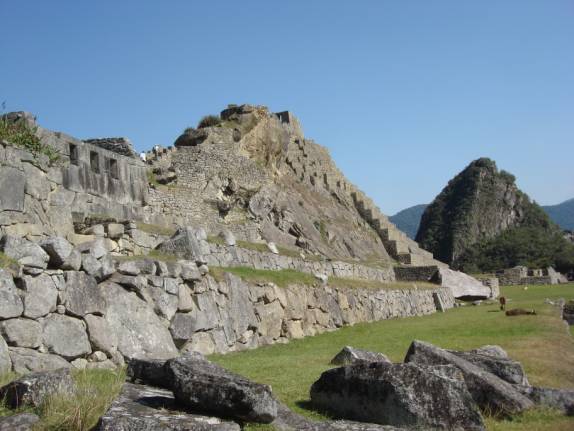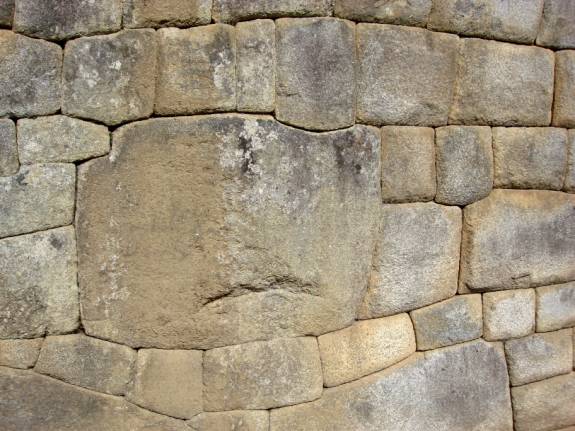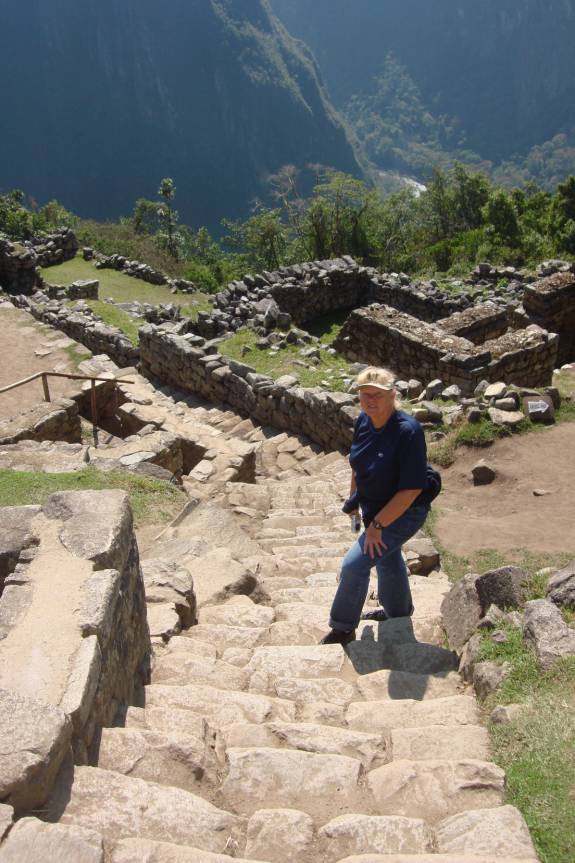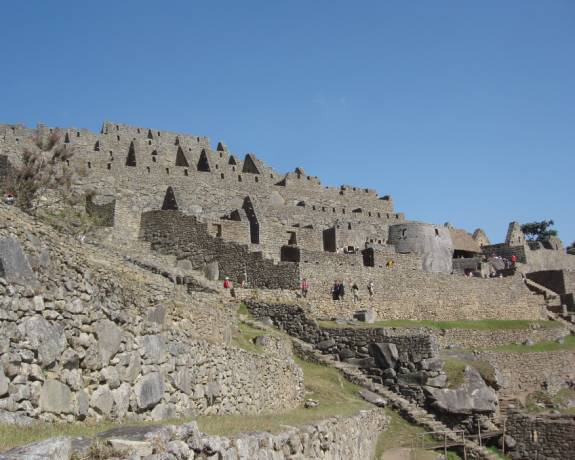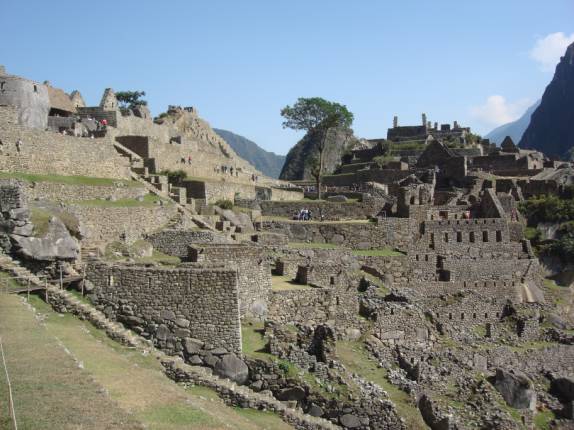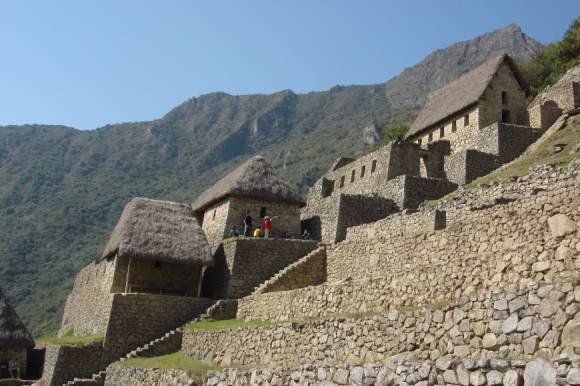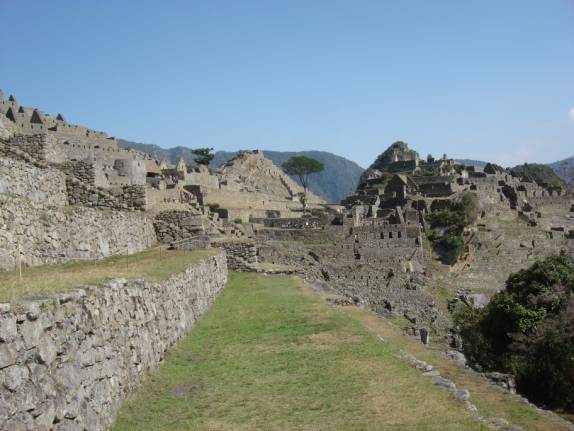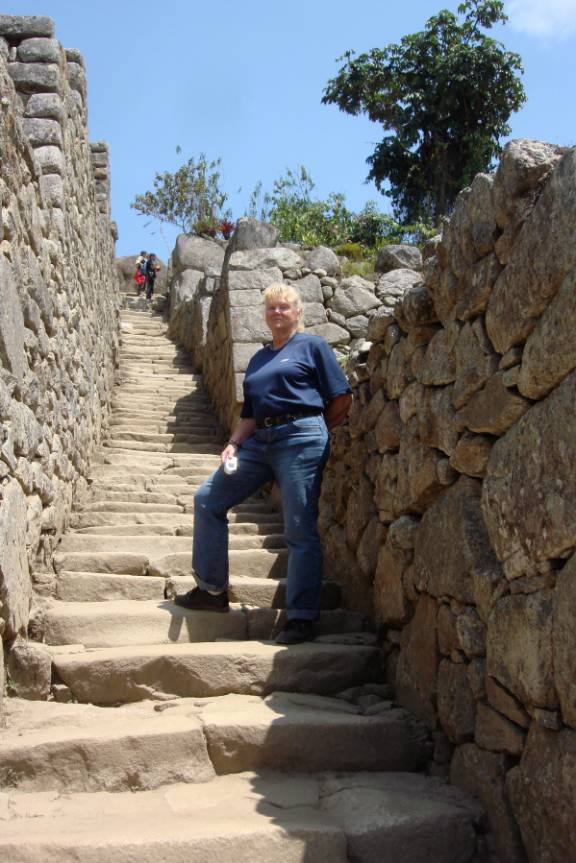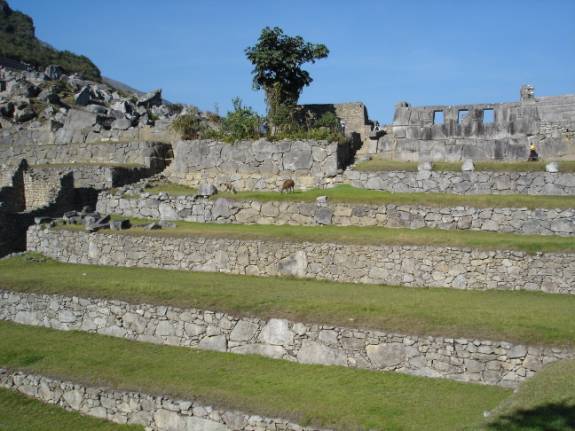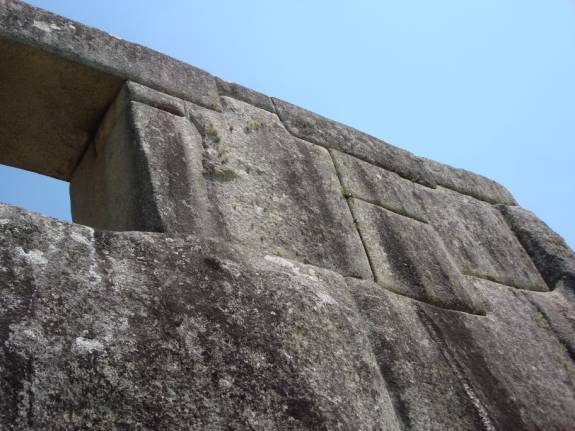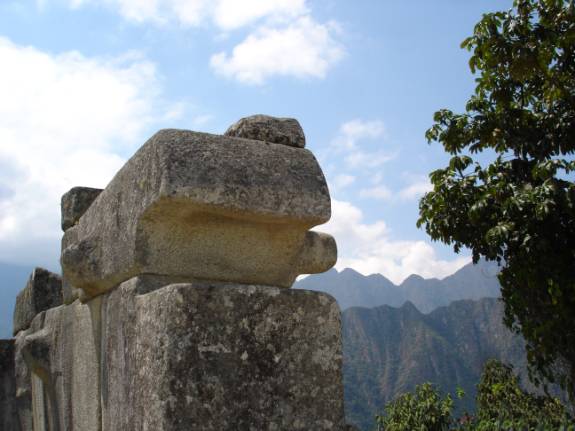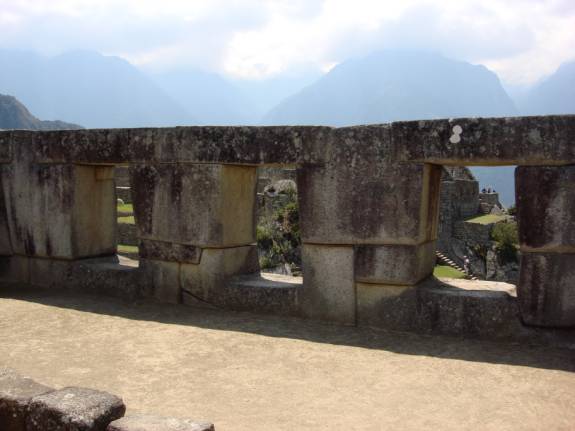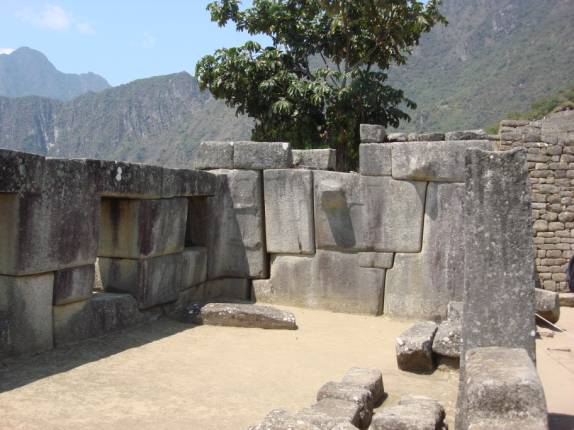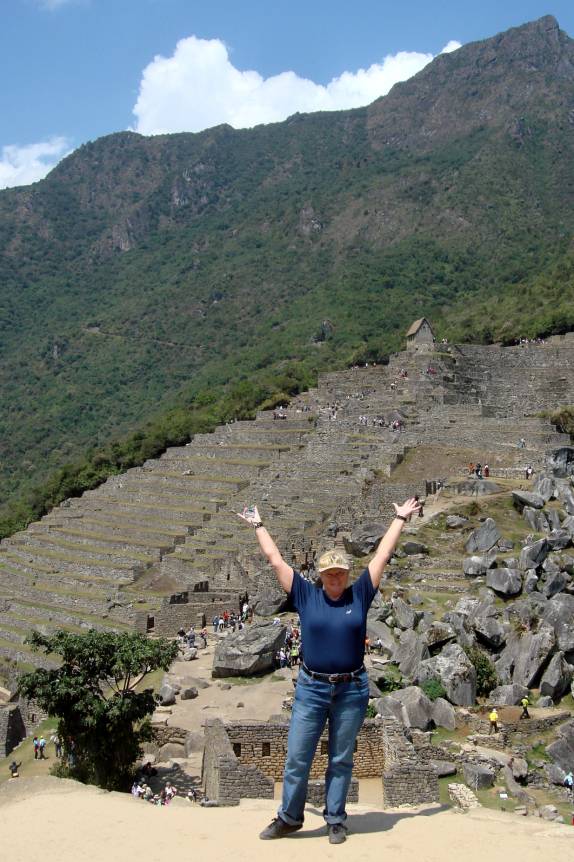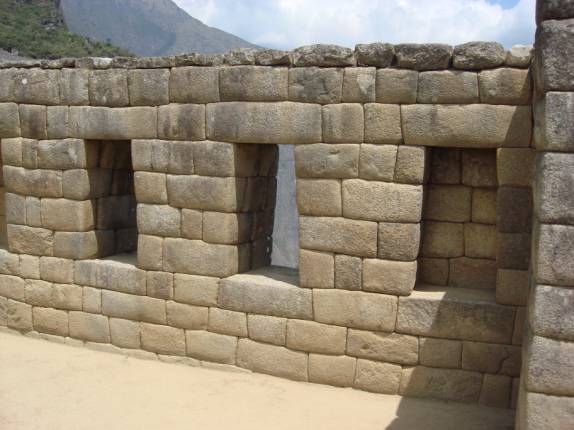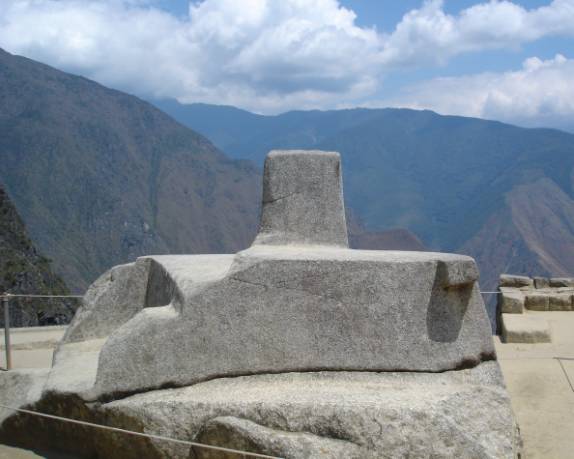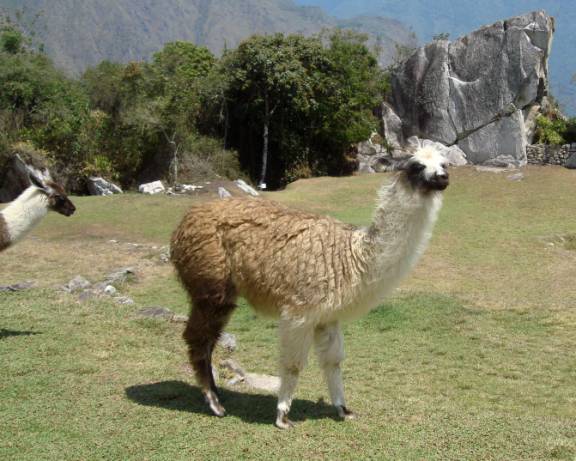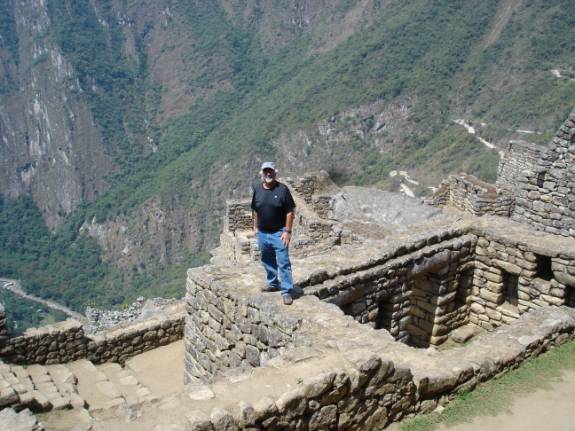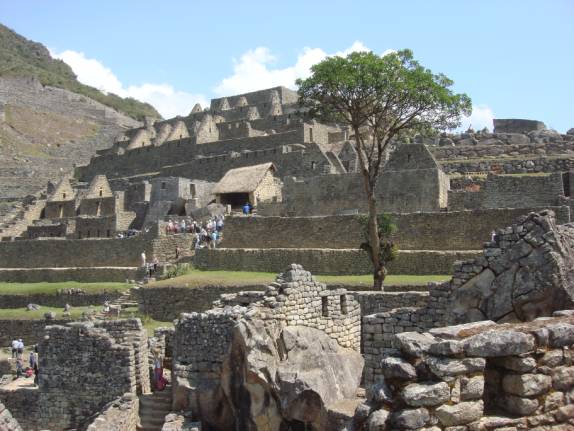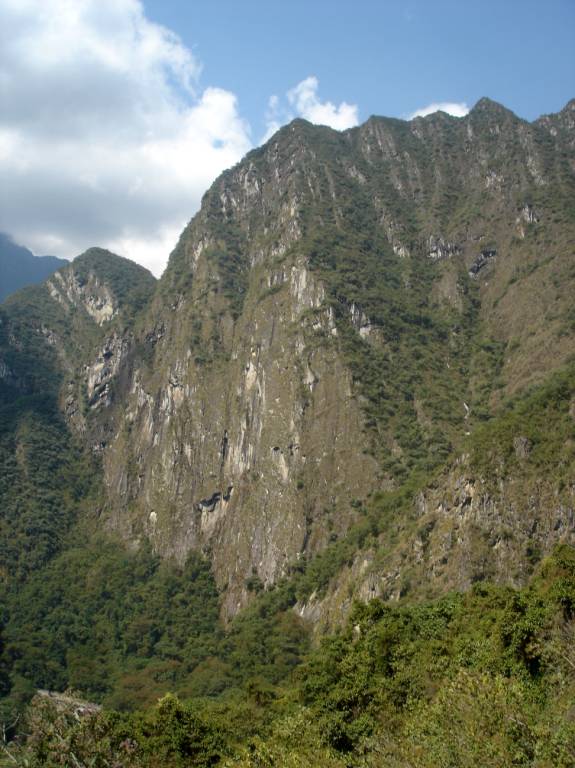|
|
|
|
Site Index:
|
UPDATE#22
08/27/08
Howdy
Everybody, Adventures
from 2006, 2007, 2008 through 08/26/08 are available on the website.
We continue now with this latest edition. UPDATE
2008 #22
08/27/08 At
last update, we had arrived in the town of Aguas Calientes in readiness for our
visit to Machu Picchu.
08/27/08
WEDNESDAY
AGUAS CALIENTES – MACHU PICCHU
When the alarm buzzed at 4:30am, it felt like we had just gotten to
sleep.
The awareness that we were about to visit one of the “New Seven Wonders
of the World” had us flitting about in eager anticipation.
Soon, we would get to see the most famous Inca site of all, “Machu
Picchu”.
Breakfast was already underway when we arrived downstairs at 5am.
About 20 people were nearly finished eating and raring to go.
When we arrived at the bus stop at only 5:20am, there were already about
200+ people in line awaiting the first buses.
Thinking that we could just buy tickets aboard the bus, we joined the
back of the line.
After seeing others with tickets in hand, I asked the security guard and
he said that I needed to go downhill and buy the tickets ahead of time.
There, they sent me back uphill to a small kiosk on the other side of the
street at the base of the overhead bridge abutment.
Tickets were $14 US per person roundtrip for the 15 to 20 minute trip.
A steady stream of over 25 buses arrived, filled to capacity, and soon
departed for the winding, dirt road leading steeply up to Machu Picchu.
With all 35 comfortable seats occupied, our bus departed about 5:50am.
All of the buses were identical, like new, top-of-the line units
operating on “Ecology-friendly”, propane or natural gas technology.
As soon as they disembark their load, the buses zip back downhill for
another load of tourists.
At the entrance gate, we had our tickets checked and were required to
show our passports.
We were told that those without their passports would be sent back to
town. In
the early morning, barely dawning light, we set out to explore and experience
adventure.
Having planned our approach to visiting the site, we made the steep climb
directly up to the Caretaker’s Hut.
There, we chose our best vantage point to observe the “magic moments”
of the sunrise into Machu Picchu.
With high mountains surrounding the area, we waited patiently in the dawn
light for the sun to illuminate to magnificent structures.
The prominent mountain is Wayna Picchu.
From the edge of a precipitous cliff, we found the perfect viewpoint.
Walking along the steeply edged cliffs gave me an adrenaline rush of
magnanimous proportions.
This magical place is such a thrill for me.
As the very first rays of the morning sun illuminated the peaks and tops
of the structures, we could feel the excitement building within us.
We were indeed experiencing some of the best adventure at this very
moment.
The weather was perfect and clear, the view was spectacular, and we were
seeing it together from the perfect location.
Second by second, minute-by-minute, more and more of the site seemed to
come alive in the brilliant sunrise.
From here, it was easy to see how the Inca might have gained such a
sacred reverence for their Sun God.
Sometimes referred to as "The Lost City of the Incas",
Machu Picchu is the most familiar symbol of the Inca Empire.
It was built around the year 1460, but abandoned as an official site for
the Inca rulers less than a hundred years later. Some historians believe it
likely that most of its inhabitants may have met their demise in a smallpox
epidemic.
Other than some local knowledge, the area is said to have been forgotten
for centuries.
Although it is believed that they looked for it, the Spanish
Conquistadors showed no record of having found the place.
In 1911, Hiram Bingham, an American historian from Yale University,
rediscovered the site.
Bingham came across this site while searching for the lost city of “Vilcapampa”,
the last Inca refuge and site of resistance during the Spanish conquest of Peru.
After enjoying the overall magnificence of the site, we headed down the
way toward the main areas for a closer view of the structures.
Machu Picchu was built
in the classical Inca style, constructed with polished, dry-stone walls. Its
principal structures are the “Intihuatana”, the “Temple of the
Sun”, and the “Room of the Three Windows”.
These are located in what is identified by archaeologists as the “Sacred
District” of Machu Picchu.
The view was inspiring looking back up toward the ancient “Caretaker’s
Hut” and the agricultural terraces.
Buildings of many varied styles were major points of interest.
The levels of individual importance may be discerned from the
architecture and quality of the stonework.
This intricate stonework is indicative of a very sacred place.
Finely crafted, trapezoid window openings seen at the “Room of the
Three Windows” display the classic traits of Inca design.
Niches, such as these in the walls of the “Temple of the Sun”,
held valuable artifacts and offerings to their god.
The apparent failure of this wall is in no way due to faulty work or
technique.
Shifting grounds encountered during restoration efforts caused the
damage.
The Inca engineering and construction was impeccable.
I can’t explain what this is or what it was for; just the fact that it
exists is simply amazing.
This Inca Trapezoid is displaying “my most valued treasure” in
the whole world.
This intricately carved, solid stone is the most famous, Inca “Intihuatani”.
It is the very last intact example remaining in the world.
The sacred object was used by the Inca to determine from the sun various
astrological observations.
Similar to a sundial, the cast shadows would reveal the change of seasons
and many other events.
The Inca had constructed numerous “Intihuatani”.
When the Spanish arrived, they smashed and destroyed almost all the
pieces in the name of Christianity and to demonstrate that the Sun God was a
false god. Because the Conquistadors never located this hidden place, this Intihuatani
was spared of their ruthless and vengeful destruction.
Building after building, structure after structure, stone after stone, we
viewed them all with awe and respect for the accomplishments of this ancient
civilization.
Most historians and archaeologists concur that Machu
Picchu was an estate and religious place of the Inca emperor, Pachacuti.
Evidence suggests that the site was selected because of its relative
position to sacred landscape features and its sacred mountains, such as “Wayna
Picchu” and “Pumasillos” , which are found to be in alignment
with key astronomical events that were extremely important to the Incas.
Using the classical Inca
architectural style of polished dry-stone walls of regular shape, the Inca
masons were masters of this technique called “ashlar”.
The various blocks of stone are precisely cut to interlock and fit
together so tightly that mortar was not needed.
Llamas graze peacefully below the terraces, just as they might well have
done centuries before.
It is said that there is enough
land to grow food for about four times as many people as ever lived there. The
area hillsides were extensively terraced, not only to provide more farmland to
grow crops, but to steepen the slopes to hamper invaders that might seek to
ascend.
Notice how the structures follow the precise shape and angular reference
as the sacred mountain of Wayna Picchu.
The intricate stonework tells us that this structure was of extreme
importance to the Inca.
Every view is a veritable feast for the visual senses.
This was part of the Temple of the Condor.
A highly developed system of aqueducts permitted the transit of life
giving waters for crops, animals, and the Inca inhabitants.
Designed
for the ancient irrigation system, archaeologists have uncovered a large number
of water fountains that are interconnected by carved channels and water-drains
set in the rock. Additional evidence suggests that the irrigation system also
carried water from a holy spring to each of the houses.
The fineness of the stone masonry combined with the unmistakable curved
architecture are clear indications that this was the actual Sun Temple dedicated
to the Sun God, Viracocha.
It is just so spectacular that words fail to express the feeling of
seeing it.
The dry-stone constructed walls built by the Incas can move slightly and
resettle without the walls collapsing. Incan architecture shows numerous,
intrinsically
subtle design details that additionally help protect them from collapsing
in a seismic disturbance. Doors and windows are trapezoidal shaped and tilt
inward from bottom to top, corners are often rounded, interior room corners
often have a slight incline, and "L"-shaped stone blocks were
frequently used to tie the exterior corners of a structure together. Most walls
do not rise straight upward from bottom to top, but are slightly offset from row
to row.
Check out the magnificent carved areas of this observation platform.
If the word “AWESOME” didn’t exist before this site was discovered,
I am confidently sure that explorer Hiram Bingham would have coined it at his
first glance here.
The Inca builders were among the finest stone masons the world has ever
seen, and many joints are so perfect that not even a sheet of paper can be fit
between the lapping stones.
This doorway is a wonderful example of a “double jam”.
This would only have been used in the most sacred and important places.
Unseen on the exterior is the amazing interlocking system that holds and
supports the sturdy structure.
Everywhere you look, there is something that is absolutely amazing.
I have no earthly idea how many millions of steps we must have climbed
and descended.
The extensive Machu
Picchu site
has palaces, baths, temples, storage rooms and some 150 residential dwellings. Including
several buildings with thatched roofs, they
are all in a remarkable state of preservation and restoration. These numerous
structures, constructed of gray granite, are astounding marvels of Incan
architectural and aesthetical genius.
In references by
archaeologists, the urban sector of Machu Picchu was arranged in three principal
districts: the Sacred District, the Popular District to the south,
and the District of the Priests and the Nobility.
Located in the “Sacred District” are the primary
archaeological treasures: the Intihuatana, the Temple of the Sun
and the Room of the Three Windows. These were dedicated to Inti,
their sun god and greatest deity.
The Popular District, or Residential District, is the place where the
lower class people lived. It includes storage buildings and simple houses.
In the royalty sector, a zone existing for the nobility, included a group
of houses located in rows over a slope, the residence of the “Amautas” (wise
persons) was characterized by its reddish walls, and the zone of the “Ńustas”
(princesses) had trapezoid-shaped rooms. The “Monumental Mausoleum"
is a carved statue with a vaulted interior and carved drawings. It was used for
rites or sacrifices.
There are more than one hundred flights of stone steps, some have been
completely carved from a single block of granite.
Do you wonder where this stairway leads?
If so, then it’s time to start planning your trip to Machu Picchu.
The Incas never utilized “wheel” technology in their
construction efforts. Although the principle was known to them and was found to
be used in some toys, it was never applied in their engineering feats. Perhaps
the lack of significantly strong draft animals, extremely rugged terrain, and
the dense vegetation may have deemed its use impractical. It remains a mystery
as to how they managed to move and place such enormous blocks of stones.
Generalized theory believes that the Inca builders utilized hundreds of
men to push and pull the immense boulders and massive stones up specially
constructed, inclined planes.
Observe the complex angles and interlocks used in these examples of fine
masonry.
I imagine that the Inca might have been the first “real estate
developers” to recognize the impact of the three most important things,
“Location, Location, and Location”.
Guess who’s “having fun now”?
This last remaining “Intihuatani” was somewhat damaged when an
irresponsible film crew was making a local beer company commercial.
It would have been a disaster if it had been more seriously damaged.
Further protection methods have been strongly urged by conservationists,
including regulations that would limit the number of people that can visit the
Machu Picchu site on a daily basis.
The Intihuatana stone (meaning 'Hitching Post of the Sun') is
believed by some to precisely indicate the moment of the solstice and equinox.
The Intihuatana was designed to “hitch the sun” at the times of
‘solstice’ believing that it had "tied the sun" to halt its
further northward or southward movement in the sky.
In determining the equinoxes, it is said that
precisely at high noon on March 21st and September 21st, the inclination of the
sun is almost directly above the stone pillar, creating no shadows at all. At
this exact moment, it is said that the Sun "sits with all his might upon
the pillar". The Inca priests held ceremonies at these times in which they
“would ensure the sun’s continued travel across the heavens”
It has been discovered that there is an additional alignment with the “Intihuatana”
during the December solstice when at sunset the sun sinks behind Pumasillo
(Puma's claw), the Inca’s most sacredly revered mountain of the Vilcabamba
range.
The exact methods of interpretation are still only speculations.
What is suggested is that there was great power in knowing when the
seasons would change and thus predict agricultural events.
It is known that it is significantly connected to the reverence of the
Inca Sun God, Viracocha.
Llamas have been the chosen beasts of burden throughout the highlands for
centuries before the Spanish conquest.
They are members of the “Camel” family of mammals.
Being animals in the same family, Alpaca, Vicuńas, and Guanacos are also
found in Peru.
Who need a “stair-master” when you have a place like this?
I guess that exercise machine would be great for getting in shape before
you come here.
By mid afternoon, we were thoroughly exhausted.
We had covered the entire site more than two times. Traversing both the
red route and the long route, we had probably overexerted ourselves some time
ago. Our
eyes had taken in all of the visual stimulation that our brains could absorb.
Our thoughts had generated more questions than we could find answers.
The “Awesome Factor” had overwhelmed our senses many times over.
We had physically and mentally reached our personal limits of endurance.
This is the snaking, dusty, dirt road that rises sharply from Aguas
Calientes to Machu Picchu.
Unless you hike in, the bus will take you in and away from the Machu
Picchu site along this very roadway.
What we wanted now was simply to get a bus back down before the surging
mad rush that was inevitable in just a short time.
After validating our passports with the official Machu Picchu entry
stamp, we joined the short line for our bus to Aguas Calientes.
This day represents our total elation with travel and the adventure
experience.
The main plaza in Aguas Calientes is always ready to welcome back the
hoards of visitors to this historic location.
We were successfully enticed into the “Dulce Gourmet Grill”
for a light lunch.
Judy enjoyed a nice, grilled chicken sandwich.
I chose the “ensalada de frutas” (fresh fruit salad).
I love these fresh, ripe tropical fruits with Papaya, Mineola
oranges, apples, bananas, pineapple, and other assorted delights. Remember, you
have to bargain to get the best prices.
There was sufficient time for a restful nap in the late afternoon.
I think that helped significantly in restoring my strength.
Having enjoyed the Dulce Grill, we returned there for our dinner plan.
Everything tasted very good.
Judy even got to have a bit of chocolate cake for dessert.
My personal favorite was the freshly sliced tomatoes.
I managed to log on to the internet from a local café.
The extremely slow service did allow me to send a couple of quick
confirmation emails to our reserved hotel and tour service for our stay in Puno.
Tomorrow, we will board the train to head back to Cusco. TO
BE CONTINUED…SOON…
Please let us know if you have any special suggestions and thoughts.
Thanks
for allowing us to share our life and adventures with you. Lotsa
Luv, Fred
Reed and Judy Law AMARSE MT40 "AMARSE". is pronounced "AM-ARE-SAY".
Our website is: www.amarse.net .
|
|
Fred H. Reed |
www.amarse.net © 2006 2007 2008 2009 2010 2011 |

